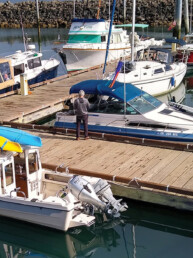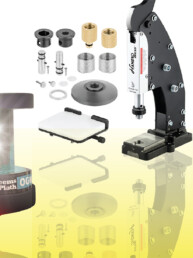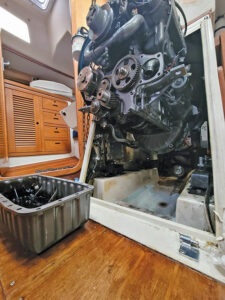
of an engine with what fits in a handheld tool bag, and so could you!
Many of us have the dream of taking our boats off-grid or offshore. The feeling of sailing beyond the lines of civilization is invigorating, and our curiosity and desire for exploration and discovery can be unstoppable. But leaving the dock and venturing afar requires readying the boat and crew for the realities of being beyond the reach of quick assistance. It is a big responsibility.
In the May 2023 issue of 48° North I wrote about what spares you should carry for coastal cruising, so you can consider this article’s list as an add-on to everything previously mentioned.
When heading out cruising to remote areas where there is limited or no help from a mechanic or shop for miles and days, you simply cannot afford to be stranded. This type of cruising differs greatly from near coastal cruising because the parts, tools, equipment, and know-how for repair can’t come from an outside source — you’ve got to own it all! Accordingly, based on my experiences on the ocean aboard commercial ships, as well as my own recreational vessels, here’s a list you can use as a building block for getting prepared.
EDUCATE YOURSELF ABOUT YOUR ELECTRICAL AND MECHANICAL SYSTEMS
While this is not a tangible “thing” to stow away under the settee or in a toolbox, it is one of the most critical things you can do to make sure you can fix or manage whatever emergency may happen — even if that means understanding your systems well enough to jury-rig it to get to a safe location.
It is a great idea to take a recreational engine, plumbing, and electrical class as a starting point. Trace your systems and know where and what everything is, that way you can repair it underway. Read a good book on vessel systems, and form an understanding of why these systems are set up the way they are; many cruisers include at least one such book in their on-board library. On the open ocean, a mechanic may not be there (unless you have a satellite phone or Starlink), so you will be the one diagnosing and enacting the repair yourself, and if you can’t do it — who will? And at what expense?
ALL THE SPARE PARTS IN THE WORLD ARE USELESS WITHOUT THE TOOLS TO INSTALL THEM
For long-distance cruising, you will want to have a well-rounded tool kit for all the repairs you think you may have onboard. Get yourself a complete socket set that does not skip sizes and a variety of ratchets — stubby, extra-long, angle-head, and others. A complete SAE and metric wrench set is critical too. Don’t forget your electrical tools such as a crimper, stripper, butane heat gun, wire cutters, and multimeter for any electrical failures that can take place underway.
If your engine has any odd tool requirements such as requiring a specialty engine-turning tool, impeller puller tool, injector puller tool, or gear pullers, then make sure to have these onboard as well for more involved repairs. Check with your regular mechanic or an engine dealer who is most familiar with your engine to see if any speciality tools are required for what you might have to do.
Having a portable vice that can be mounted to the boat somewhere is a super helpful tool for a lot of repairs, such as rebuilding a pump, assembling plumbing, and more. A good variety of pliers, vice-grips, screwdrivers, pry-bars, heel bars, and a small scissor jack will be helpful too. I carry all of these items onboard when I travel aboard my boat, just as I do when I work onboard clients’ vessels. I can do 98% of repairs with what I carry in my handheld toolbox, including rebuilding most of my engine.
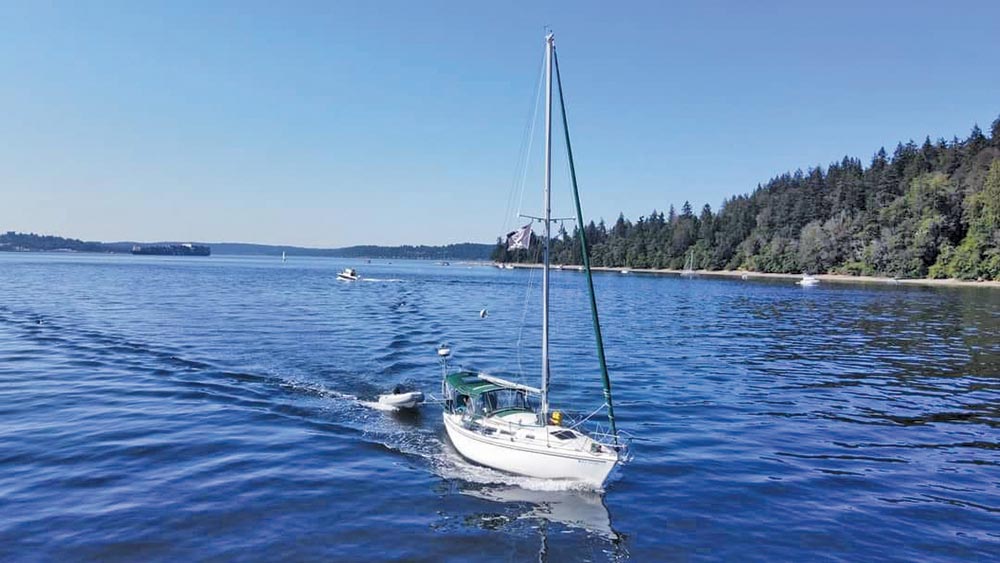
SPARE ENGINE PARTS: CARRY MORE THAN YOU THINK YOU WILL NEED
A common question I get is what specifically to carry for the engine, and this of course varies based on where you plan to go or how long you will be out on your own. I always recommend carrying more than you think you will need, within the limits of what you can afford. Many friends of mine have taken trips down the coast to Mexico, across the ocean, up to Alaska, or around Vancouver Island, and a good general list for a trip like this includes an extra starter, alternator, injectors, turbo (if equipped), engine hoses, motor mounts, propeller, complete engine gasket set, heat exchanger, rigid fuel lines, rigid oil lines (if equipped), oil cooler(s), and a variety of marine grade electrical cable and connectors/lugs.
For those of you who are traveling the world for long amounts of time, you will eventually need everything that you would at home. If you are cruising for a month, you probably don’t need everything on the list if you have been diligent in servicing and checking these items prior to leaving. This includes having your engine pressure tested and your heat exchanger serviced — that way you know it won’t fail two weeks into your voyage.
PRE-PLAN CHECKPOINTS WHERE YOU CAN ACCESS HELP AND PARTS
If you are planning a trip around Vancouver Island for two months, do your research and locate different locations along your route where you could stop by if needed. For example, if you have a Yanmar engine, identify Yanmar dealers and maybe call them and see what they do and whether they can ship to different ports.
For trips to places like Mexico, or farther, finding an engine dealer will become harder, so will finding even the most basic spare parts, such as marine grade wiring… or any wiring for that matter! I flew to Mexico one year to rewire a sailboat and when we ran out of what we had brought with us, we were forced to try and find it in town. It was not an easy venture and we ended up having to ship things to Arizona and drive north to get them. Sometimes, a friend can help you order things if you are far away from home, but paying the shipping and tariffs can get expensive for even for the most basic things — hence, the more you have, the better off you’ll be.
DON’T FORGET THE ODDS AND ENDS
For emergency repairs where parts can’t be accessed or it just needs to be a band-aid to get you to a safe port, having a good box of sealants and band-aid stuff such as RTV gasket maker, anti-seize, Sil-glyde, rescue tape, extra hoses, extra wire, PB blaster, PTFE thread sealant, fire hose scraps, and bronze fittings can be really helpful. Completing repairs properly while at your home port will prevent a lot of these “quick fixes”, but if you need to, you can patch something up and continue on. These are also helpful items for regular repairs too!
Being prepared to handle whatever comes your way will make for a fun and safe trip. No one wants to pay the penalty of becoming stranded or putting themselves in danger, especially when those things happen because of a lack of preparation. Try to think as far ahead as you can for whatever you plan on doing — equip the boat and have checkpoints along the way. Prepare the engine and electrical as much as you can before you leave. Learn as much as you can about your vessel and the systems onboard, then get out there and explore!
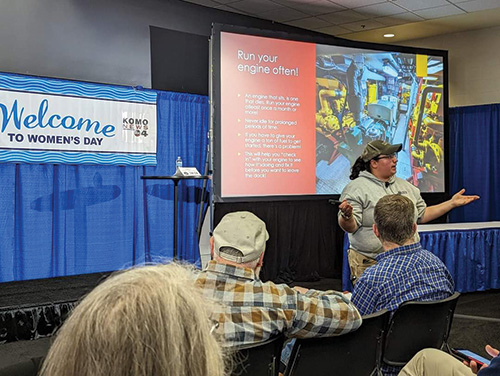
Meredith Anderson is the owner of Meredith’s Marine Services, where she operates a mobile mechanic service and teaches hands-on marine diesel classes to groups and in private classes aboard clients’ own vessels.



